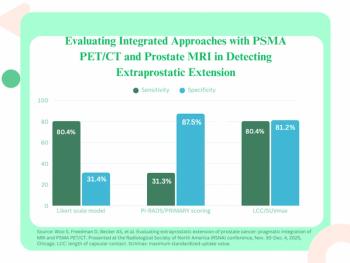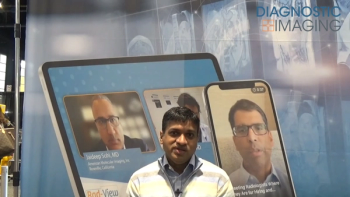
Non-Contrast MRI Diagnostically Similar to Standard Protocol for Pediatric Pituitary Pathologies
The diagnostic performance for central precocious puberty, growth hormone deficiency, and short stature is similar to that of standard contrast protocols.
Non-contrast pituitary MRI offers an equivalent diagnosis to standard contrast-enhanced protocols when imaging for central precocious puberty (CPP), growth hormone deficiency (GHD), and short stature (SS).
In an award-winning poster presented during the ARRS 2021 Virtual Annual Meeting, Jennifer Huang, M.D., a second-year medical resident at Vanderbilt University, showed that using a non-contrast protocol could impact patient care.
For more ARRS 2021 Virtual Annual Meeting conference coverage, click
“Microadenomas, a common justification for contrast administration, may not influence management in this patient population,” she said. “Minimal inconvenience would be added for the few patients who would need to return for contrast-enhanced MRI for definitive diagnosis.”
For this study, Huang’s team conducted a retrospective review of 448 pediatric pituitary MRI studies – from patients with an average age of 8.2 years – captured between 2010 and 2019 for CPP, GHD, and SS. Two sub-specialty-trained pediatric neuroradiologists performed a blinded review of the non-contrast images.
Of the MRIs, 35 percent were for CPP, 49 percent were for GHD, and 16 percent were for SS. Gadolinium contrast was used in all 448 MRI scans, and 226 (50 percent) required sedation. Based on the team’s analysis 136 scans (30 percent) were abnormal – 71 percent of which (97 scans) agreed with original reports on blinded review of non-contrast images. And, 79 percent of the 39 scans that showed a discrepancy were of no clinical significance.
When the discrepancies were examined further, one was of uncertain significance, and seven (five extrasellar masses and two pituitary stalk abnormalities) were visible on non-contrast images, but they needed contrast to achieve definitive characterization.
Overall, Huang said, these results showed that opting for non-contrast imaging can provide benefit to patients.
“In a large majority of patients, the shorter non-contrast examination would provide savings in time, anesthesia, gadolinium, and associated costs,” the team said.
For more coverage based on industry expert insights and research, subscribe to the Diagnostic Imaging e-Newsletter
Newsletter
Stay at the forefront of radiology with the Diagnostic Imaging newsletter, delivering the latest news, clinical insights, and imaging advancements for today’s radiologists.



























